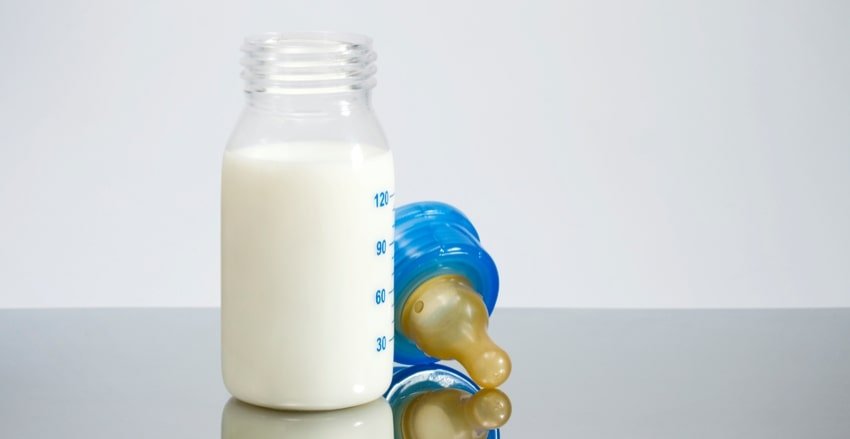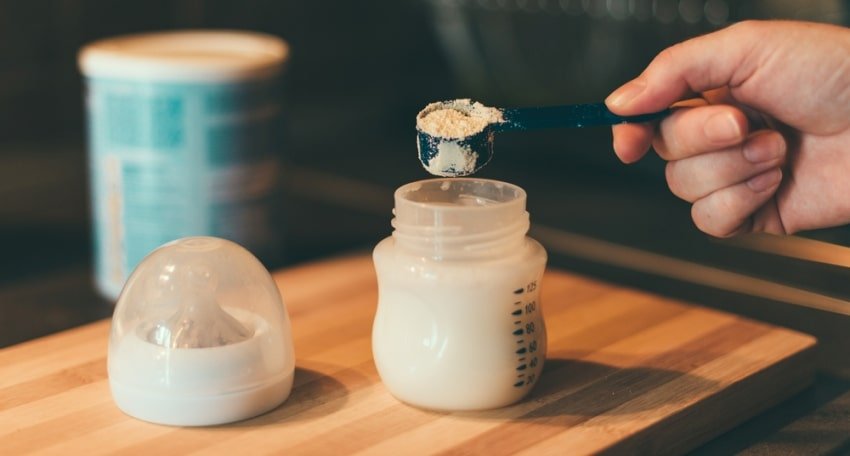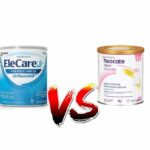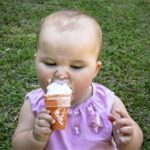So you’ve found the perfect formula for your baby after carefully researching each and every brand. Your little one is feeding often but never seems to finish the bottle that you prepared.
You prepare the next one in a smaller bottle and they finish it all and want more. Now you wish you used the bigger one. So now you’re wondering if you can reuse your baby’s unfinished bottle of formula.
Unfortunately, there is no quick and simple answer to this as there are too many factors to take into consideration before you can give a definitive yes or no. Here is the low down on formula dos and don’ts, and what you need to know to keep your little one safe!
In this article
Types Of Baby Formula Available
Baby formula has come a long way in the last few years. It has produced products to help parents who are on the go and need the convenience of ready-made milk as well as the knowledge that it is safe to feed their baby.
View in gallery
You can now purchase most baby formula brands in the traditional powder in a large tub and the ready-made formula in handy smaller bottles. Although you can purchase these larger bottles depending on the age and quantity that your baby is consuming.
How To Prepare Formula Safely At Home
When you are preparing a bottle for your baby, the most important thing to remember is hygiene. Before you begin you must ensure that you have washed your hands thoroughly and that all bottle parts have been sterilized. This is recommended until your baby is at least 12 months old.
When mixing formula, you need to start by boiling the water. This means that the water needs to be on a rolling boil for around one minute. You then need to let the water cool at room temperature before adding the formula.
You can check the temperature by sprinkling a few drops onto the inside of your wrist. Once your water is at the correct temperature, you can begin the formula preparation:
- Ensure hands are thoroughly washed and dried.
- You have already measured out the correct amount of cooled boiled water in your baby’s bottle.
- Add a level scoop of powder to the bottle as directed. One level scoop of formula per 2 FL oz of water. Ensure scoop is dry before returning to the can.
- Put the cap on the bottle and shake it thoroughly.
- Feed or store in a refrigerator immediately.
You can also make a formula in a larger quantity and store safely in the refrigerator either ready in capped bottles or in a clean sterilized capped container. This formula will need to be used within 24 hours of preparation.
If you have chosen to use ready-made formula then you do not need to worry about boiling water but you still need to follow the hygiene standards when preparing a bottle.
Ensure that your hands are washed thoroughly, baby’s bottles are clean and sterilized, and you are ready to go. Shake the ready to feed formula before opening, twist off the cap, and pour into your baby bottle. Storage of ready to feed formula is slightly different from the powder version.
Unopened ready-to-feed containers can be stored at room temperature, out of direct sunlight. If you are using the larger bottles of the ready to feed formula, once opened these need to be stored immediately in the refrigerator and needs to be used within 48 hours.
A good tip that I have used is to mark the bottles with the date and time they were either prepared or ready to feed formula when they were opened. You can do this by using some painters tape on your bottles as this is easily removed for the next time.
With the ready to feed bottles, you can write directly on the bottles as they are not reusable.
View in gallery
Preparing Formula On The Go
This is where the ready to feed formula comes into its own. It is perfect for family trips out, lunch with friends, or even the school run. All you would need is an unopened bottle of ready to feed formula and a clean bottle.
When your little one is ready, just open and pour the feed into their bottle and you are ready to go. This can be a very expensive way to feed your baby as the premixed formula is more expensive than the powdered version.
If you don’t want to use ready to feed formula, you can still use the powder version. But be aware that there is a little bit more prep involved.
- Before you leave home, you would need to work out roughly how many bottles your baby is going to need until you return home. So if you are just popping to meet friends for a few hours then they may only need two bottles but if you are off for a family day trip then you may need to prepare several bottles.
- Once you have worked out how many bottles you need to prepare, you will need to measure out the powder required for each bottle into a clean, dry bottle.
- Boil the water that is required for those bottles and put it into a thermos flask to take with you. These will usually keep the water hot for around four hours.
- When your baby is ready for their feed, just add the water from the thermos to the powder and shake.
- Once all the mixture is mixed, you will need to check the temperature by sprinkling a few drops on your wrist.
- Once the right temperature is reached, serve immediately.
If you are only going to be out for a short time, maybe a quick trip to the grocery store or the park, you can use one mix formula and put it in a bottle ready to serve. There are a few steps to follow:
- Once you have made the formula as per the directions of the manufacturer, the milk needs to be chilled in the back of the refrigerator for around an hour, this is where it is coldest.
- Then you can store a premade bottle in a cool bag with ice packs for around 2 hours, after this, it will need to be discarded.
- Large insulated bottle and food bag holds up to 6 standard 8oz. bottles plus food, snacks, and more; A great solution for day care, traveling, or any time you and baby are out of the house all day
- Two fully-insulated compartments; Cooler includes reusable ice pack and shoulder strap; Look for replacement ice packs from J.L. Childress on Amazon.com: J.L. Childress Reusable Ice Packs, White, 2-Count
- Easy-to-clean lining pulls up and out and is PVC, lead, and phthalate free; Lining is also leak-proof and heat-sealing
- Bottom compartment holds and chills up to 6 standard 8oz. bottles for hours; Top compartment holds 3 food jars, utensils, bibs, and more
- Also use as a storage and carry bag for pumping and breastfeeding; Fits breastmilk storage bags and a small pump
Prices pulled from the Amazon Product Advertising API on:
Product prices and availability are accurate as of the date/time indicated and are subject to change. Any price and availability information displayed on [relevant Amazon Site(s), as applicable] at the time of purchase will apply to the purchase of this product.
Many parents warm their baby formula before serving but there is no medical reason for doing this. One of my babies liked their milk cold from the refrigerator while another liked theirs warmed.
Warming Formula From The Refrigerator
If you have premade your bottles and they are being stored in the refrigerator, you may need to warm these before serving them to your baby. As I have said above there is no medical reason for warming them so you will need to see what your baby prefers.
To warm a bottle of formula straight from the refrigerator, you can either run it under hot water or you could place it in a jug or bowl of very hot water until it reaches the temperature required. Please remember to check the temperature on your wrist before feeding to your baby.
A more convenient option is using a bottle warmer. This can sit on your countertop or you could get one that is portable and plugs into your car. These work on the same basis of putting your bottle in a jug of hot water.
You would need to check that they are compatible with your bottle brand as not all bottles fit all bottle warmers.
- MULTI-USE BOTTLE WARMER: Quickly warms breast milk, milk formula, baby food jars and sanitizes multiple pacifiers at once
- EASY TO USE: Prefill the water vial to desired amount and then store in warmer - no need to measure in the middle of the night!
- COMPACT BOTTLE WARMER: Compact size fits easily on counter so you can keep in nursery or on nightstand for easy access during the night
- COMPATIBLE WITH MOST BABY BOTTLES: Works with most wide, narrow, angled and even disposable bottles
- Auto Shut Off
Prices pulled from the Amazon Product Advertising API on:
Product prices and availability are accurate as of the date/time indicated and are subject to change. Any price and availability information displayed on [relevant Amazon Site(s), as applicable] at the time of purchase will apply to the purchase of this product.
One thing you should never do is use a microwave to warm up your formula. This is because microwaves can cause hot spots in the milk and could potentially burn your baby’s mouth.
Leftover Formula Risks
The reason that the leftover formula should not be reused after the recommended times is that it can become contaminated and potentially cause your baby harm.
When your baby drinks from a bottle the bacteria from their mouth transfers to the formula in the bottle, here it can quickly start to grow and multiply. This bacteria could potentially cause your little one, whose immune system is not as strong as ours to become sick with food poisoning.
Unfortunately, due to the temperature that we tend to feed baby formula at it offers the perfect breeding ground for some nasty germs and bacteria. This is also why we ensure bottles are thoroughly sterilized before using them.
How To Avoid Waste
Baby’s formula is expensive and your baby is going to consume an awful lot of it in their first year of life. So to avoid wasting formula because your baby did not finish their feed, you need to make up as much formula as you expect your baby to drink.
I know that this is easier said than done. Some babies suddenly have growth spurts or one day will consume a high amount of formula and then hardly anything the following day.
If you can track roughly how much they are consuming and how much you are throwing away, you will eventually see a kind of pattern develop. This will help you to better judge the amount of formula to prepare and lower the amount you are throwing away.






